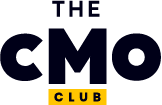A strong brand management strategy protects your business, attracts new customers and builds customer loyalty. It keeps your company competitive, improves brand recognition, and aligns teams around a clear identity.
According to the Trust Barometer report by the marketing consulting firm Edelman, brands' role in customers' buying decisions has been increasing, with 63% of buyers in 2023 making purchases based on belief, an almost 9% annual increase from the 58% figure in 2022. Apple, with $880 billion in brand equity, is a clear example of how strategic brand management drives business results.
In this guide, I’ll walk you through how to build a brand management strategy that fuels growth, builds trust, and keeps your brand ahead.
What is Brand Management?
Brand management is the strategic process of building, maintaining, and evolving how your brand is perceived by customers. It’s about influencing reputation, increasing brand value, defining brand positioning, and ensuring your brand consistently delivers on its promises.
It encompasses every touchpoint where customers interact with your brand from your logo and messaging to customer service and product experience. Brand management involves these key activities:
- Brand positioning: How your brand differentiates itself from competitors, and what unique value it delivers to customers
- Brand identity development: Creating and maintaining consistent visual elements, messaging, and tone of voice across all channels and communications
- Brand monitoring: Tracking how customers perceive your brand through social listening, surveys, and reputation management tools
- Brand strategy execution: Ensuring all marketing, sales, and customer experience initiatives align with your brand's core values and positioning
Effective brand management goes beyond marketing campaigns. It requires alignment across every department, from how your customer service team handles complaints to how your product team develops new features. The goal is creating a cohesive brand experience that builds trust, recognition, and loyalty over time.
Strong brand management pays dividends through increased customer retention, premium pricing power, and competitive differentiation. When customers have a clear, positive association with your brand, they're more likely to choose you over alternatives and recommend you to others.
Why is Brand Management Important?
Successful brand management is the difference between companies that thrive and those that struggle to stand out in crowded markets. In today's competitive landscape, consumers face countless choices, making brand perception a critical factor in purchasing decisions. Without deliberate brand management, businesses risk being seen as commodities, competing solely on price rather than value.
The impact of effective brand management manifests in several crucial ways:
- Trust and credibility building - Brand consistency across all touchpoints creates reliability in customers' minds, making them more likely to choose your brand when making purchase decisions
- Premium pricing power - Strong brands command higher prices because customers perceive greater value and are willing to pay more for trusted, recognized names
- Customer loyalty and retention - Emotional connection fostered through consistent brand experiences leads to repeat purchases and long-term customer relationships
- Market differentiation - Clear brand messaging helps customers understand what makes your offering unique, setting you apart from generic competitors
The ripple effects extend far beyond marketing metrics. Well-managed brands attract top talent who want to work for respected companies, secure better partnerships with suppliers and distributors, and often weather economic downturns more effectively than their poorly-branded counterparts.
Companies that neglect brand management find themselves trapped in price wars, struggling with customer acquisition costs, and vulnerable to any competitor with a stronger brand presence. Successful brand management transforms your business from a vendor into a preferred partner, creating sustainable competitive advantages that compound over time.
How to Create an Effective Brand Management Strategy
While creating and executing an effective strategy is a complex process requiring the seamless integration of many disparate tasks and can seem more like an art than a science, there are best practices and patterns you can follow to avoid pitfalls and maximize your chance of success. We've distilled these best practices into an optimized process for brand strategy development.
Organize Brand Assets
Brand assets are the design elements, such as logo, tagline, and color scheme that identify your brand and set it apart from competitors. An effective asset, such as a famous logo or slogan, can create an immediate association between the asset and the brand in people's minds. As assets can account for most of your brand's customer touchpoints, they are critical to your marketing strategy by improving your brand awareness and reinforcing your identity. Tools like intellectual property management software can help ensure these assets are consistently protected and effectively managed.
The 3 most important assets in your brand management strategy are:
- Logo: Logos are the top recognizable brand identifier, with 75% of people recognizing a brand by its logo. More importantly, 50% are more inclined to buy from a brand with a logo they know. Nike's Swoosh, McDonald’s Golden Arches, and Apple's bitten apple logo are all iconic designs that are instantly recognizable throughout the world.
- Color Scheme: Color has an outsized impact on human perception. People make up their minds about a product within 90 seconds, with up to 90% of that initial impression based on color alone. Tiffany's robin egg blue, Hermès' classical orange, and Subway's yellow and green are examples of the power of a well-designed color scheme.
- Slogan: A good slogan can convey your brand image and purpose in a memorable and punchy catchphrase. When you see the phrase "Just Do It," you instantly know it's Nike. Other famous slogans include Disneyland's “The happiest place on Earth” and De Beer's “A diamond is forever.” In a marketplace full of competing products, a catchy slogan can help your brand stand out and stay in customers' consciousness.
In addition to the 3 elements above, other important assets include:
- Packaging
- Font
- Song or audio snippet
- Mascot
- Video
Align Brand Assets With Your Brand Purpose, Vision, and Personality
Your assets should reinforce and be consistent with your brand purpose, vision, and personality.
Brand purpose is the immediate motivation behind your daily decisions and operations, vision is your company's long-term guiding principle and ultimate goal, and brand personality is the characteristics you give your brand to personify it and help it resonate with your target audience.
For example:
- Nike
- Purpose: “To bring inspiration and innovation to every athlete in the world”
- Vision: “We see a world where everybody is an athlete — united in the joy of movement”
- Personality: Determined, competitive, adventurous, strong, spirited
- Microsoft
- Purpose: “To empower every person and every organization on the planet to achieve more”
- Vision: “To help people and businesses throughout the world realize their full potential”
- Personality: Innovative, warm, personable, trustworthy, competent
Different brand purposes, visions, and personalities can call for different asset designs. A mass-market brand may work best with a striking logo design and primary color scheme, while a monogram emblem with an understated color palette may be more suitable for an upscale brand.
Manage Brand Assets
Once you've created your assets, you can store and organize them with brand management software to enable all employees to access them easily. This way, you can maintain a single source of materials and enforce a companywide standard for your logo, font, color palette, and document templates.
Align Your Brand Values and Brand Positioning
To strengthen brand equity and resonate with their customer bases, successful brands ensure their values align with positioning. You can do the same by taking stock of your values and positioning to check for any inconsistency between them.
Brand values are the foundation and principles that guide a business' operation and its employees' daily decisions and behaviors. These core values drive the company culture and help create brand loyalty. Interview the key stakeholders within your organization and document the core values that define your brand and guide your employees. Examples of brand values include:
- Nike: Community, sustainability, diversity, social responsibility
- Disney: Optimism, storytelling, quality, innovation
- Levi Strauss: Empathy, originality, integrity, courage
Once you've documented your values, it's time to ascertain your positioning and ensure they align. Interview your existing and potential customers to see how they perceive your brand, and perform competitive analyses to find out how your brand stacks up against other vendors.
Compare your values and positioning to find out any misalignment between them. For example, while "sustainability" is one of your values, your customers may see some of your competitors as sustainability leaders instead. In that case, adjust your strategy, including marketing and PR, to emphasize what you're doing to protect the planet and support sustainability.
Plan & Create Your Marketing
When planning and creating your marketing campaign, ensure it uses the appropriate brand voice to represent your core values and convey your messaging. For example, if your values include "integrity," design your marketing to evoke feelings of authenticity and trust. And if "warmth" is one of your brand personalities, emphasize a friendly customer experience in your marketing.
Similarly, your values and personalities should also determine your marketing channels. Rolex, a luxurious watch brand with a rich heritage, sponsors the PGA of America to reinforce its upscale and traditional image. Red Bull, an edgy, adventurous brand, focuses its marketing on extreme sports, such as rock climbing and mountain biking, to stress its fun-loving personality.
If your customers are mostly Generation X or baby boomers, consider TV, radio, and newspaper as your preferred marketing channels. Conversely, if you sell mainly to millennials or Generation Z, you're more likely to reach your audience through digital marketing on social media or phone apps.
Depending on your target market segments, you may include alternative channels, such as YouTube challenges, influencer marketing, and physical gifting, in your marketing plan to reach your most loyal customers and maximize brand recognition.
Monitor Your Brand Reputation
A critical step in brand management strategy is to monitor your brand reputation after you roll out your campaign. You want to see how your marketing has impacted your brand reputation, positively or otherwise.
As part of your reputation management strategy, you can use social media monitoring software or media monitoring software to scan user comments, reviews, and feedback on social media, including Twitter, Facebook, and Reddit, to summarize and distill them into easily digestible quantitative metrics, such as "87% positive."
You can also generate graphs to track how your reputation changes over time and how different marketing campaigns and channels impact it. This way, you can fine-tune your marketing efforts to optimize your performance.
Measure & Analyze Performance
Strategic brand management is an ongoing process with continuous feedback and adjustment. Measure and analyze your brand performance to optimize your brand strategy continually.
Important metrics for brand attribution include:
- Brand awareness: Does your target audience know your brand? Answering this question is vital to measuring brand awareness.
- Top-of-mind brand awareness: The percentage of the audience who name your brand first when thinking of your niche
- Unaided brand awareness: The number of people who mention your brand (in blog posts, social media comments, etc.) unprompted
- Aided brand awareness: The number of people who recognize your brand with assistance, such as picking it out of a list of choices
- Brand advocacy: Do your customers promote your brand through word of mouth?
- Customer Satisfaction (CSAT) score: Using a survey, ask your customers how satisfied they are with your brand. The percentage of those who answered "satisfied" or "very satisfied" is your CSAT score. A high percentage of satisfied or very satisfied customers bodes well for your brand equity.
- Net Promoter Score (NPS): Using a survey, ask your customers how likely they are, on a 0-10 scale, to recommend your brand. Subtract the number of respondents who answered 0-6 from those who answered 9-10. Divide that by the total number of responses to calculate your NPS.
- Purchase intent: How likely your audience is to buy from you within a specific period, such as the next 6 or 12 months? Measure this metric using surveys or predictive modeling based on data including website engagement, reactions to marketing messages, and demographics.
Future Trends in Brand Management
Brand management strategy must evolve with shifting consumer expectations, tech innovation, and cultural dynamics. To stay competitive, modern brands must anticipate where the discipline is headed. Here are the key trends reshaping how marketers approach brand management:
Digital-First Branding
With digital touchpoints dominating the customer journey, consistent and adaptable brand presence across websites, apps, and social platforms is non-negotiable.
Personalization at Scale
Consumers expect tailored experiences. Advances in AI and data analytics enable brands to deliver hyper-personalized content, offers, and interactions without sacrificing efficiency.
Sustainability and Social Impact
A brand’s stance on environmental and social issues is increasingly influencing buying decisions. Authentic, values-driven branding is expected if brands want to remain relevant.
Customer Experience as Brand Differentiator
CX is no longer a support function. It’s core to brand identity. Brands are investing in seamless, intuitive, and emotionally resonant experiences to build loyalty.
Influencer and Community-Led Brand Building
Top-down brand narratives are giving way to community-driven content. Influencers, creators, and brand advocates are playing a bigger role in shaping perception.
Real-World Examples of Effective Brand Management Strategy
The most successful brands in the world have invested decades in strategic brand management, creating consistent experiences at every touchpoint. These examples demonstrate how different approaches to brand management can drive extraordinary business results.
Salesforce: Customer Success and Innovation
Salesforce has built its brand around customer success and continuous innovation in the CRM space. Their brand management emphasizes helping businesses grow and succeed through technology.

Key elements of Salesforce's brand management include:
- Customer success focus - "Customer success is our success" messaging appears consistently across all communications and product development.
- Innovation storytelling - Regular product releases and Dreamforce events position Salesforce as the leader in CRM innovation.
- Community building - Trailhead learning platform and user communities create strong brand loyalty and advocacy.
- Consistent visual identity - The cloud logo, blue color scheme, and friendly mascots (Astro, Codey) create approachable brand recognition.
HubSpot: Education and Inbound Marketing
HubSpot transformed from a marketing automation tool into a comprehensive business growth platform by focusing on education and helping businesses attract customers naturally.

Their approach demonstrates key brand management principles:
- Education-first strategy - Free courses, certifications, and content establish HubSpot as a thought leader in marketing and sales.
- Inbound philosophy - "Get found, get customers" messaging differentiates from traditional outbound marketing approaches.
- Transparent communication - Open sharing of business metrics and lessons learned builds trust with prospects and customers.
- Growth-focused positioning - Consistent messaging around helping businesses grow better resonates across all market segments.
Slack: Workplace Communication Revolution
Slack redefined workplace communication by positioning itself as more than just messaging software. Their brand management centers on making work more human and productive.

Slack's brand management success stems from:
- Human-centered messaging - "Make work better" and focus on reducing email overload appeals to frustrated office workers.
- Visual consistency - Colorful, playful design language differentiates from enterprise software while maintaining professionalism.
- Community advocacy - User-generated content and customer stories demonstrate real workplace transformation.
- Integration ecosystem - Positioning as a platform that connects all work tools rather than just another communication app.
Start Your Journey
Ready to create your brand management strategy? Check out our picks for the 10 Best Brand Management Software to find one for your project.
While you're here, don't forget to subscribe to our newsletter to get the latest on marketing tools, techniques, trends, strategies and leadership.



